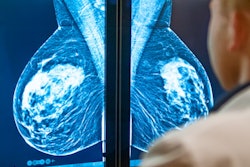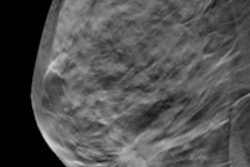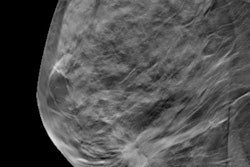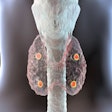
Combining digital breast tomosynthesis (DBT) with synthesized 2D mammography leads to higher cancer detection rates with fewer recalls compared with conventional mammography alone, according to German research published on 25 October in European Radiology.
A team led by Dr. Sylvia Heywang‑Köbrunner from the National Reference Centre Mammography Munich in Germany also found no differences in biopsy rates between the screening methods and that the combined method does not lead to double exposure to radiation.
 Dr. Sylvia Heywang‑Köbrunner.
Dr. Sylvia Heywang‑Köbrunner."To our best knowledge, this is the first meta-analysis of biopsy rates, biopsies recommended, and biopsies performed in women screened with DBT plus synthesized 2D mammography compared to digital mammography alone," said Heywang‑Köbrunner and colleagues.
DBT has grown in popularity in recent years, with researchers touting its accuracy in detecting breast cancer over standard digital mammography. Combining DBT with other screening methods, including mammography, has been experimented with. However, doing so leads to a double radiation dosage received by patients.
Synthetic mammography, however, reconstructs 2D images from DBT data, meaning no additional radiation dosage.
Heywang‑Köbrunner et al wanted to systematically review and analyze cancer detection rates and recall rates, focusing on available information on biopsy rates and using studies comparing DBT plus synthesized 2D mammography with digital mammography alone. They also performed sensitivity analyses to address heterogeneity among studies.
The researchers looked at data from 12 papers published between 2010 and 2020 that covered a total of 414,281 women from 10 different populations. These included women in the U.S., Italy, Spain, Norway, and Australia. The study authors noted that the overall risk of bias of the included studies was assessed to be low.
Heywang‑Köbrunner and colleagues found that screening with DBT plus synthesized 2D mammography compared with digital mammography alone is linked to higher cancer detection rates (risk ratio, 1.35), decreased recalls (risk ratio, 0.79), and a higher cancer detection among recalls (risk ratio, 1.69).
They also found that cancer detection after recommended and performed biopsies was higher with DBT plus synthesized mammography compared with digital mammography alone (risk ratios, 1.57 and 1.36, respectively).
DBT plus synthesized 2D mammography also had higher positive predictive values for recalls in breast cancer screening.
While no differences in biopsy rates were found between the screening methods, biopsies recommended and performed were higher in women screened with the combined method compared with mammography alone.
The researchers also found inconsistent results of interval cancer rates in two studies comparing DBT plus synthesized 2D mammography compared with digital mammography alone, which resulted in no differences when pooling such rates in analyzing studies.
The study authors wrote that further research regarding interval cancer rates stratified by age and breast density is needed.
"Since high cancer detection rate may be related with overdiagnoses, interval cancer rate is the more clinically relevant outcome parameter as it reflects potentially important delays in diagnosis and treatment," they said.



















